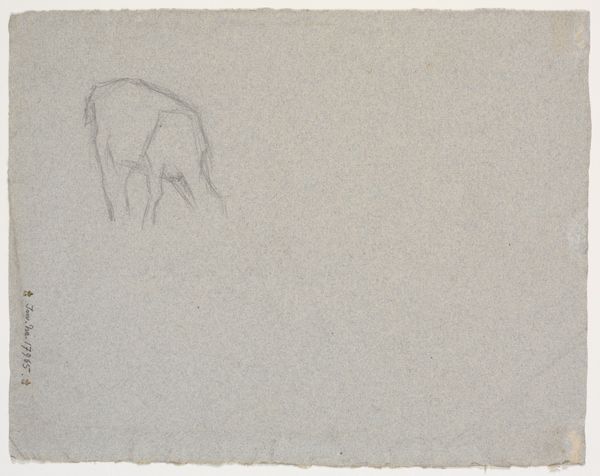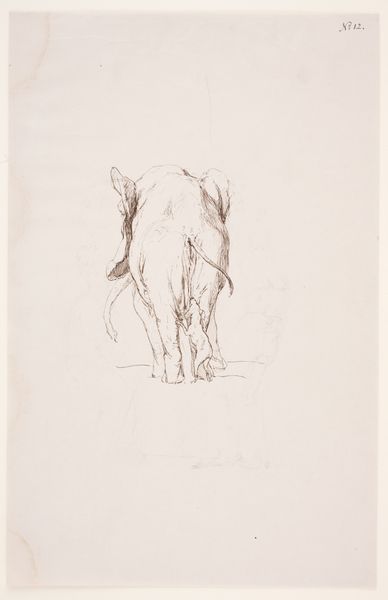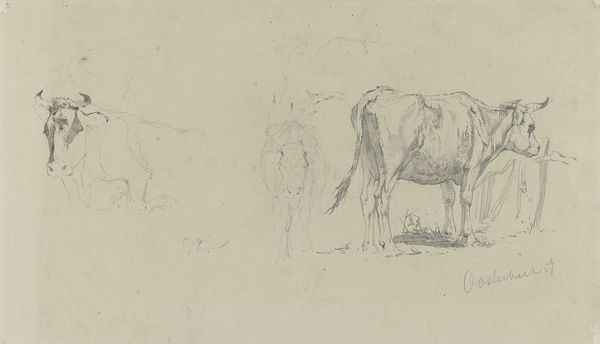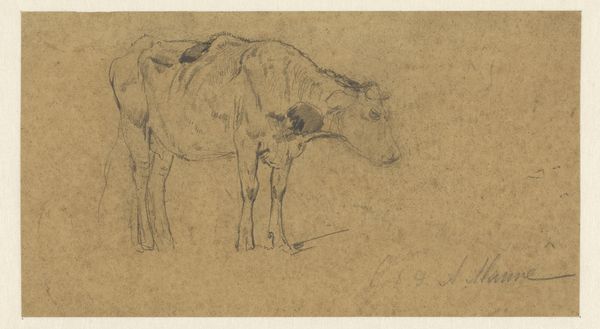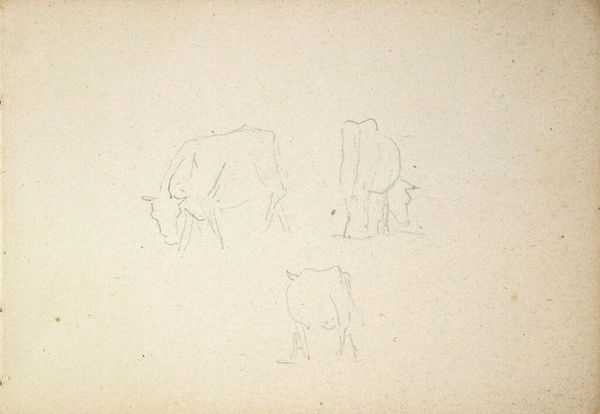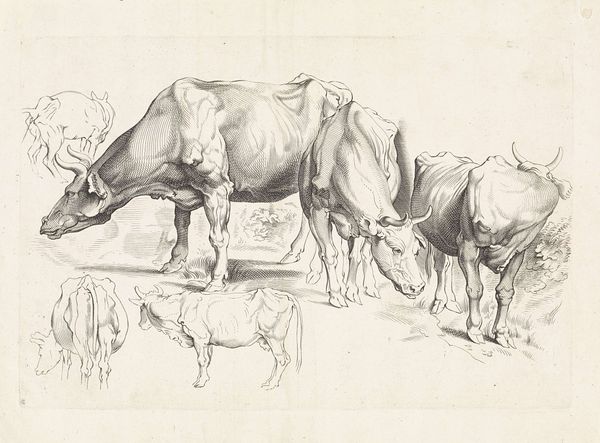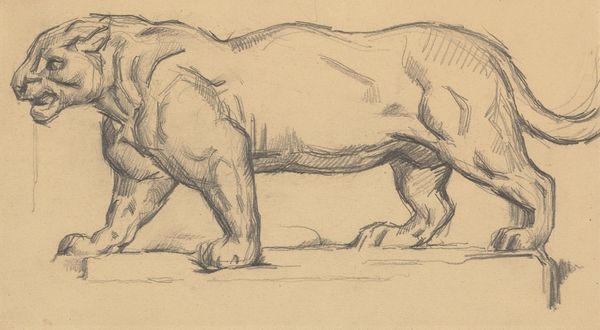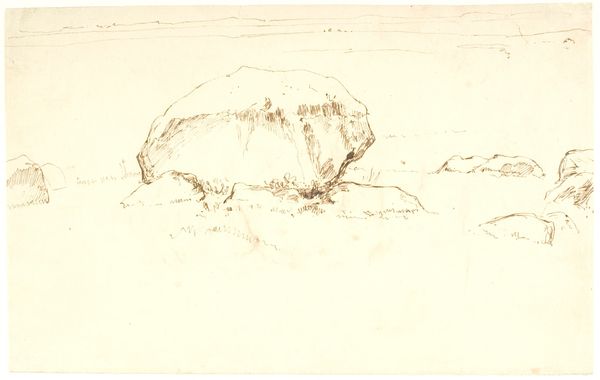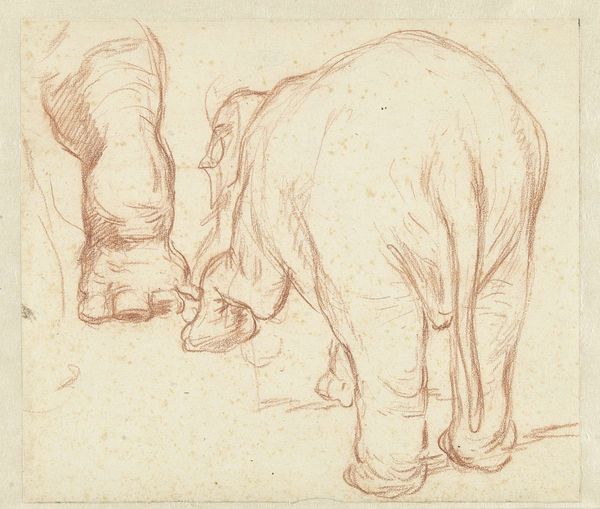
"Weg der Befleckung" - Elefant forretter sin nødtørft. 2 studier 1857 - 1920
0:00
0:00
drawing, print, etching
#
portrait
#
drawing
# print
#
etching
#
etching
#
realism
Dimensions: 325 mm (height) x 210 mm (width) (bladmaal)
Curator: We're looking at "Weg der Befleckung" – Elefant forretter sin nødtørft. 2 studier, created between 1857 and 1920 by Max Klinger. It’s currently held at the SMK – Statens Museum for Kunst. It presents two studies of an elephant rendered in etching. What strikes you immediately about this piece? Editor: The fragility, undoubtedly. It's an etching, so there’s an inherent delicate quality, but Klinger’s mark-making is incredibly sparse. He hasn't tried to disguise the physical effort. It speaks to labor as an inherent part of artmaking. The elephant seems monumental, yet so ephemeral in its construction. Curator: It's fascinating how an animal so associated with power and grandeur is presented here in such a… mundane moment. The title itself points to a "path of defilement." The act portrayed subverts our expectations, and I see echoes of how societal norms can be defiled. Editor: Defilement! That's intense! To me it reflects Klinger’s engagement with materiality. Here, waste transforms into representation, raising questions about the hierarchy between materials deemed worthy and those considered base. It seems deeply involved in the processes that create something valued. Curator: Well, the animal has been interpreted in various contexts, though Klinger was keen on depicting symbolism and depth. The elephant in itself carries symbolic weight – wisdom, memory, even royalty. Editor: Exactly! And he chose *this* moment! Not trumpeting triumphantly. Consider what etching entails: the artist physically manipulates the copper plate, acids erode it, and ink is forced into those grooves. It mirrors life – degradation as a core means for imprinting form. Curator: I'd argue that it adds layers of interpretation rather than diminishing symbolic readings. The seeming ordinariness emphasizes, paradoxically, its continued, weighty relevance. It presents something eternal about existence by anchoring it in such humble, transient scenes. Editor: It makes me reconsider my expectations regarding what an "elephant" and by extension, what artmaking, should signify. It really centers our focus on that pivotal instant – from animal to labor to value – the power isn't top-down from representation, but an elemental exchange across substance itself. Curator: Ultimately, Klinger captures a convergence of elements. Symbolism and representation do not detract from one another; rather, their tension forms a critical lens through which we might reassess accepted knowledge. Editor: An assessment from the inside, tracing transformation – material to image and expectation, now undone. Quite impactful for such simple and clear imagery.
Comments
No comments
Be the first to comment and join the conversation on the ultimate creative platform.
